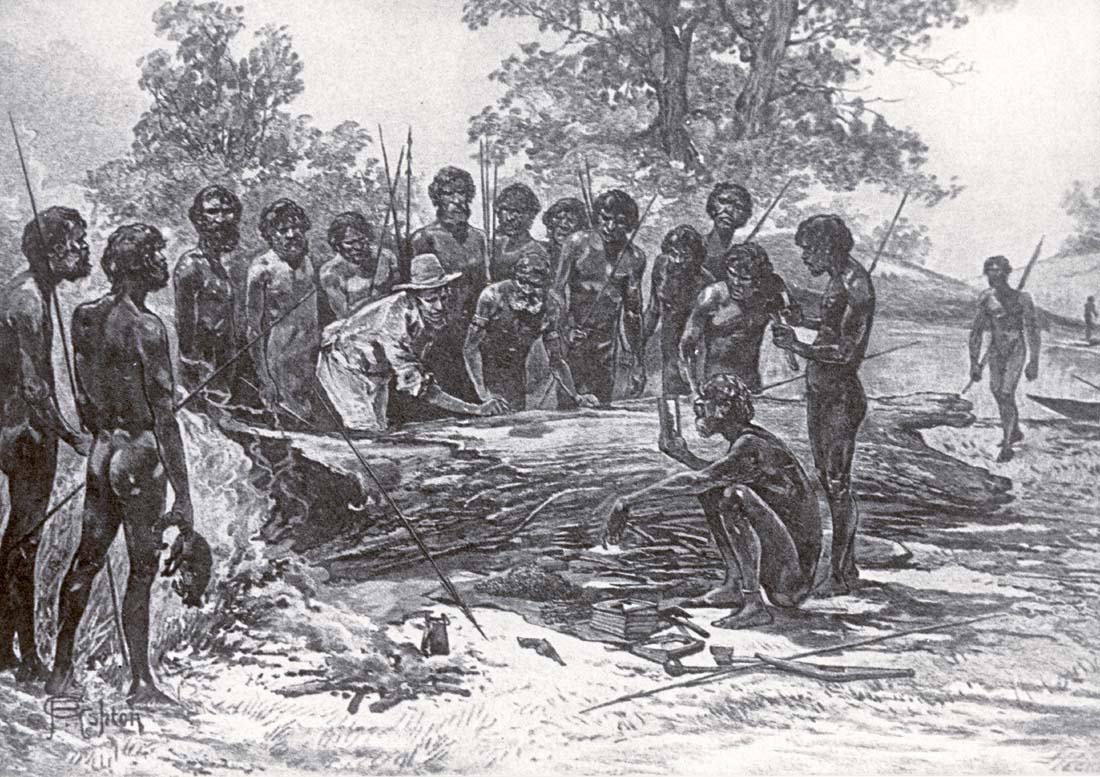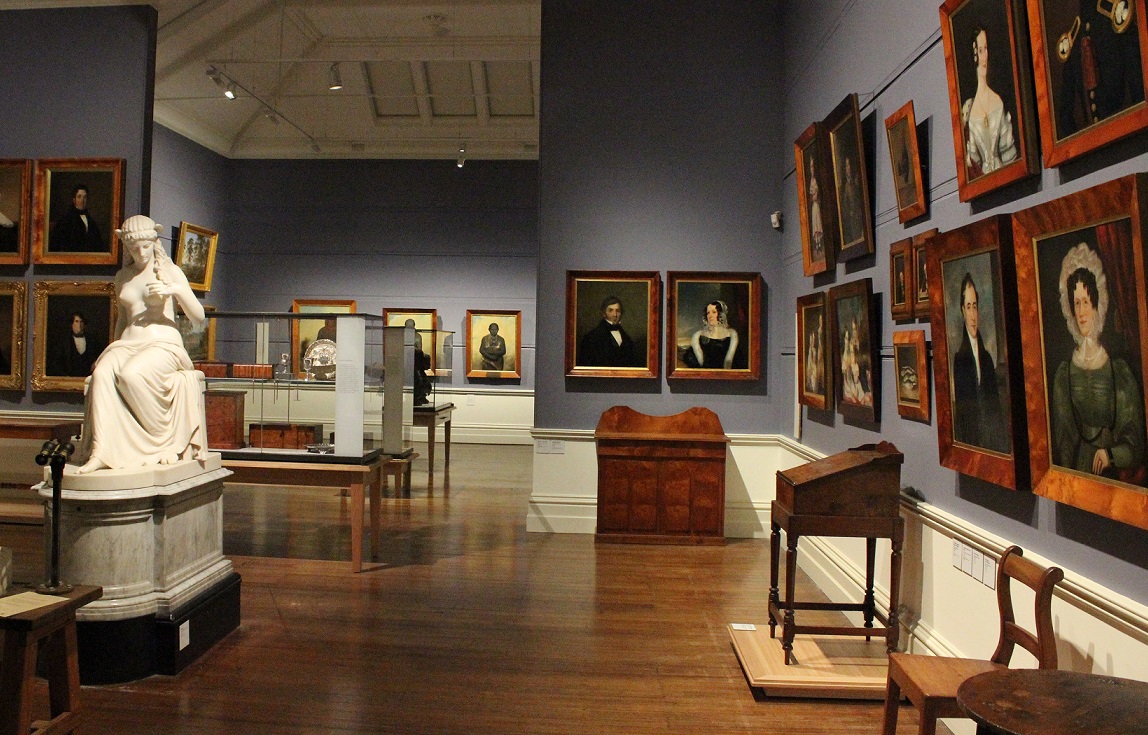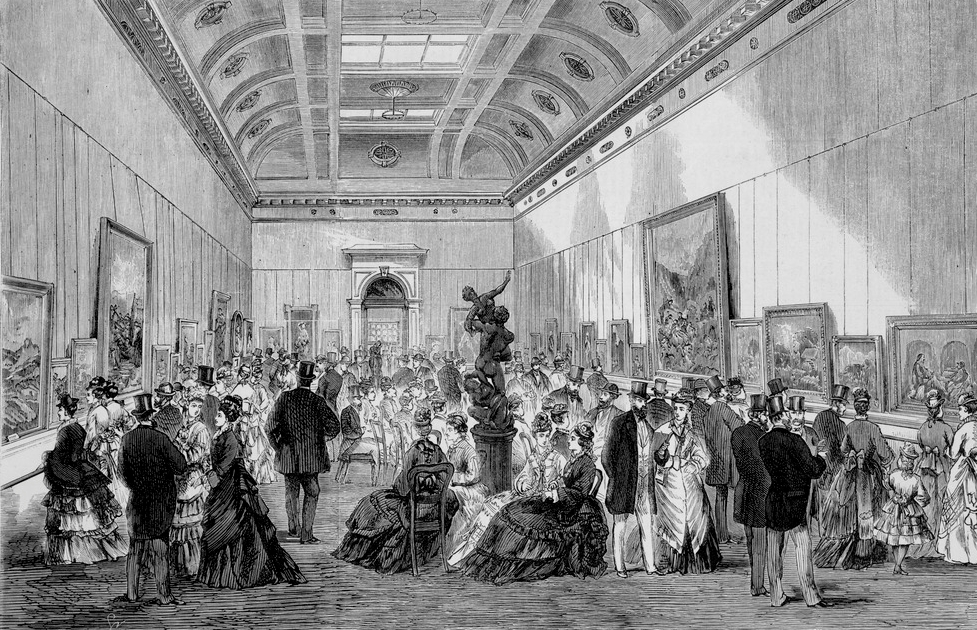|
Stephen Benwell
Stephen Benwell (born 1953) is a Melbourne-based artist working predominantly in the medium of ceramics. Education Benwell trained as an artist in Melbourne, Australia, receiving a Diploma of Art from the Victorian College of the Arts in 1974. He went on to study ceramics under Professor Noel John Flood, attaining a Diploma of Education from Melbourne State College in 1976. In 2005, he completed his formal education with a Masters of Fine Arts from Monash University. Art practice Through the medium of ceramics, Stephen Benwell seeks to challenge local and international pottery traditions and art-craft context. Aesthetically, his work marries studio-based investigations of the ceramicist with the painterly and sculptural concerns of the contemporary artist. It manifests in how he couples high art with low art or low culture. Exhibitions and collections Stephen Benwell has exhibited consistently since 1975. His work has been exhibited in over 30 solo and over 60 group shows. ... [...More Info...] [...Related Items...] OR: [Wikipedia] [Google] [Baidu] |
Melbourne
Melbourne ( ; Boonwurrung/ Woiwurrung: ''Narrm'' or ''Naarm'') is the capital and most populous city of the Australian state of Victoria, and the second-most populous city in both Australia and Oceania. Its name generally refers to a metropolitan area known as Greater Melbourne, comprising an urban agglomeration of 31 local municipalities, although the name is also used specifically for the local municipality of City of Melbourne based around its central business area. The metropolis occupies much of the northern and eastern coastlines of Port Phillip Bay and spreads into the Mornington Peninsula, part of West Gippsland, as well as the hinterlands towards the Yarra Valley, the Dandenong and Macedon Ranges. It has a population over 5 million (19% of the population of Australia, as per 2021 census), mostly residing to the east side of the city centre, and its inhabitants are commonly referred to as "Melburnians". The area of Melbourne has been home to Abori ... [...More Info...] [...Related Items...] OR: [Wikipedia] [Google] [Baidu] |
Heide Museum Of Modern Art
The Heide Museum of Modern Art, also known as Heide, is an art museum in Bulleen, a suburb of Melbourne, Victoria, Australia. Established in 1981, the museum houses modern and contemporary art across three distinct exhibition buildings and is set within sixteen acres of heritage-listed gardens and a sculpture park. The museum occupies the site of a former dairy farm owned by prominent arts benefactors John and Sunday Reed. After purchasing the farm in 1934, they named it Heide in reference to the Heidelberg School, an impressionist art movement that developed in nearby Heidelberg in the 1880s. Heide became the gathering place for a collective of young modernist painters known as the Heide Circle, which included Sidney Nolan, John Perceval, Albert Tucker and Joy Hester, who often stayed in the Reeds' 19th-century farmhouse, now known as Heide I. Today they rank among Australia's best-known artists and are also considered leaders of the Angry Penguins, a modernist art movemen ... [...More Info...] [...Related Items...] OR: [Wikipedia] [Google] [Baidu] |
Living People
Related categories * :Year of birth missing (living people) / :Year of birth unknown * :Date of birth missing (living people) / :Date of birth unknown * :Place of birth missing (living people) / :Place of birth unknown * :Year of death missing / :Year of death unknown * :Date of death missing / :Date of death unknown * :Place of death missing / :Place of death unknown * :Missing middle or first names See also * :Dead people * :Template:L, which generates this category or death years, and birth year and sort keys. : {{DEFAULTSORT:Living people 21st-century people People by status ... [...More Info...] [...Related Items...] OR: [Wikipedia] [Google] [Baidu] |
1953 Births
Events January * January 6 – The Asian Socialist Conference opens in Rangoon, Burma. * January 12 – Estonian émigrés found a government-in-exile in Oslo. * January 14 ** Marshal Josip Broz Tito is chosen President of Yugoslavia. ** The CIA-sponsored Robertson Panel first meets to discuss the UFO phenomenon. * January 15 – Georg Dertinger, foreign minister of East Germany, is arrested for spying. * January 19 – 71.1% of all television sets in the United States are tuned into ''I Love Lucy'', to watch Lucy give birth to Little Ricky, which is more people than those who tune into Dwight Eisenhower's inauguration the next day. This record has yet to be broken. * January 20 – Dwight D. Eisenhower is sworn in as the 34th President of the United States. * January 24 ** Mau Mau Uprising: Rebels in Kenya kill the Ruck family (father, mother, and six-year-old son). ** Leader of East Germany Walter Ulbricht announces that agriculture will ... [...More Info...] [...Related Items...] OR: [Wikipedia] [Google] [Baidu] |
Cité Internationale Des Arts
The Cité internationale des arts is an artist-in-residence building complex which accommodates artists of all specialities and nationalities in Paris. It comprises two sites, one located in the Marais and the other in Montmartre. Approximately 1200 artists, choreographers, musicians, writers and designers from around the world live and work in the Cité internationale des arts every year. Residencies are generally a year long. History and description The ''Cité internationale des arts'' was a Franco-Scandinavian idea proposed by the Finnish artist Eero Snellman (1890-1951) during a speech at the 1937 ''Exposition Internationale des Arts et Techniques dans la Vie Moderne''. It was only after the Second World War that this idea was taken up by Mr. and Mrs. Félix Brunau and became a real project. It took the form of an association created in 1947 which benefited from the support of the Ministry of Culture and the Ministry of Foreign Affairs as well as the Academy of Fine ... [...More Info...] [...Related Items...] OR: [Wikipedia] [Google] [Baidu] |
Australia Council For The Arts
The Australia Council for the Arts, commonly known as the Australia Council, is the country's official arts council, serving as an arts funding and advisory body for the Government of Australia. The council was announced in 1967 as the Australian Council for the Arts, with the first members appointed the following year. It was made a statutory corporation by the passage of the ''Australia Council Act 1975''. The organisation has included several boards within its structure over the years, including more than one incarnation of a Visual Arts Board (VAB), in the 1970s–80s and in the early 2000s. History Prime Minister Harold Holt announced the establishment of a national arts council in November 1967, modelled on similar bodies in Canada, the United Kingdom and the United States. It was one of his last major policy announcements prior to his death the following month. In June 1968, Holt's successor John Gorton announced the first ten members of the council, which was i ... [...More Info...] [...Related Items...] OR: [Wikipedia] [Google] [Baidu] |
Victoria And Albert Museum
The Victoria and Albert Museum (often abbreviated as the V&A) in London is the world's largest museum of applied arts, decorative arts and design, housing a permanent collection of over 2.27 million objects. It was founded in 1852 and named after Queen Victoria and Prince Albert. The V&A is located in the Royal Borough of Kensington and Chelsea, in an area known as " Albertopolis" because of its association with Prince Albert, the Albert Memorial and the major cultural institutions with which he was associated. These include the Natural History Museum, the Science Museum, the Royal Albert Hall and Imperial College London. The museum is a non-departmental public body sponsored by the Department for Digital, Culture, Media and Sport. As with other national British museums, entrance is free. The V&A covers and 145 galleries. Its collection spans 5,000 years of art, from ancient times to the present day, from the cultures of Europe, North America, Asia and North ... [...More Info...] [...Related Items...] OR: [Wikipedia] [Google] [Baidu] |
Tasmanian Museum And Art Gallery
The Tasmanian Museum and Art Gallery (TMAG) is a museum located in Hobart, Tasmania. The museum was established in 1846, by the Royal Society of Tasmania, the oldest Royal Society outside England. The TMAG receives 400,000 visitors annually. History The museum was officially created in 1848, though the collections it housed were much created earlier. It merged a number of disparate collections, including that of the Royal Society of Tasmania. The Mechanics' Institution of Hobart, Van Diemen's Land Agricultural Society and Van Diemen's Land Scientific Society had each attempted to found a museum earlier than this date, the most successful of these being the Mechanics' Institution, but little record remains of what happened to these efforts. Sir John Eardley-Wilmot, 1st Baronet, during his period was Lt. Governor of Tasmania, did much of the work that led to the modern museum. The museum was noted as first being an established institution in the 1848 minutes of the Royal Soc ... [...More Info...] [...Related Items...] OR: [Wikipedia] [Google] [Baidu] |
Queensland Art Gallery
The Queensland Art Gallery (QAG) is an art museum located in South Bank, Brisbane, Queensland, Australia. The gallery is part of QAGOMA. It complements the Gallery of Modern Art (GOMA) building, situated only away. The Queensland Art Gallery is owned and operated by the Government of Queensland, which created the institution in 1895 as the Queensland National Art Gallery. History The gallery was established in 1895 as the Queensland National Art Gallery. Throughout its early history the gallery was housed in a series of temporary premises. In the 1960s it shared premises with the Queensland Museum. Sir Leon Trout, a businessman and art collector, initiated a plan to include an art gallery in a proposed Queensland Cultural Centre in South Brisbane. The first stage of the monumental Robin Gibson-designed Queensland Cultural Centre opened on Brisbane's South Bank in 1982. The Gallery of Modern Art (GOMA) was established in 2006 which lead to the creation of a two-campus in ... [...More Info...] [...Related Items...] OR: [Wikipedia] [Google] [Baidu] |
Art Gallery Of Western Australia
The Art Gallery of Western Australia (AGWA) is a public art gallery that is part of the Perth Cultural Centre, in Perth. It is located near the Western Australian Museum and State Library of Western Australia and is supported and managed by the Department of Local Government, Sport and Cultural Industries of the Government of Western Australia. The current gallery main building opened in 1979. It is linked to the old court house – The Centenary Galleries. History The Art Gallery was originally housed in the Jubilee Building with the State Museum and Library. The Jubilee Building, which was intended to be a public library only, was to be opened in honour of Queen Victoria's Golden Jubilee in 1887, but instead, only the first stone for the foundation was laid. The foundation stone was laid for the Art Gallery in July 1901 by the Duke of Cornwall and York, shortly after the federation of Australia. Several notable individuals were involved with the development of the Jubilee B ... [...More Info...] [...Related Items...] OR: [Wikipedia] [Google] [Baidu] |
Art Gallery Of South Australia
The Art Gallery of South Australia (AGSA), established as the National Gallery of South Australia in 1881, is located in Adelaide. It is the most significant visual arts museum in the Australian state of South Australia. It has a collection of almost 45,000 works of art, making it the second largest state art collection in Australia (after the National Gallery of Victoria). As part of North Terrace cultural precinct, the gallery is flanked by the South Australian Museum to the west and the University of Adelaide to the east. As well as its permanent collection, which is especially renowned for its collection of Australian art, AGSA hosts the annual Festival of Contemporary Aboriginal and Torres Strait Islander Art known as '' Tarnanthi'', displays a number of visiting exhibitions each year and also contributes travelling exhibitions to regional galleries. European (including British), Asian and North American art are also well represented in its collections. the Director o ... [...More Info...] [...Related Items...] OR: [Wikipedia] [Google] [Baidu] |
National Gallery Of Victoria
The National Gallery of Victoria, popularly known as the NGV, is an art museum in Melbourne, Victoria (Australia), Victoria, Australia. Founded in 1861, it is Australia's oldest and list of most visited art museums in the world, most visited art museum. The NGV houses an encyclopedic art collection across two sites: NGV International, located on St Kilda Road in the Melbourne Arts Precinct of Southbank, Victoria, Southbank, and the Ian Potter Centre: NGV Australia, located nearby at Federation Square. The NGV International building, designed by Roy Grounds, Sir Roy Grounds, opened in 1968, and was redeveloped by Mario Bellini before reopening in 2003. It houses the gallery's international art collection and is on the Victorian Heritage Register. The Ian Potter Centre: NGV Australia, designed by Lab Architecture Studio, opened in 2002 and houses the gallery's Australian art collection. A third site, The Fox: NGV Contemporary, is planned to open in 2028, and will be Australia's ... [...More Info...] [...Related Items...] OR: [Wikipedia] [Google] [Baidu] |








